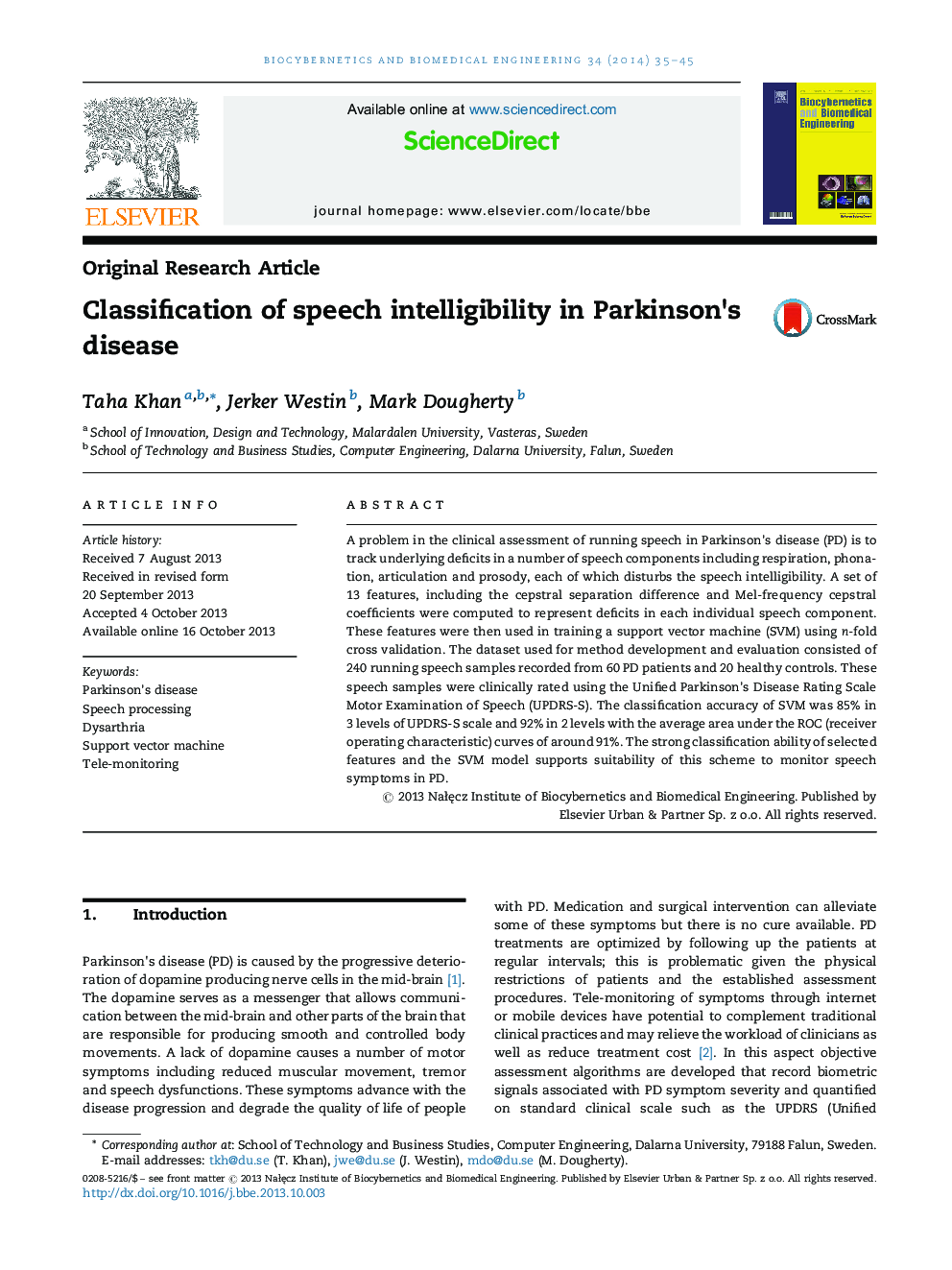| Article ID | Journal | Published Year | Pages | File Type |
|---|---|---|---|---|
| 5234 | Biocybernetics and Biomedical Engineering | 2014 | 11 Pages |
A problem in the clinical assessment of running speech in Parkinson's disease (PD) is to track underlying deficits in a number of speech components including respiration, phonation, articulation and prosody, each of which disturbs the speech intelligibility. A set of 13 features, including the cepstral separation difference and Mel-frequency cepstral coefficients were computed to represent deficits in each individual speech component. These features were then used in training a support vector machine (SVM) using n-fold cross validation. The dataset used for method development and evaluation consisted of 240 running speech samples recorded from 60 PD patients and 20 healthy controls. These speech samples were clinically rated using the Unified Parkinson's Disease Rating Scale Motor Examination of Speech (UPDRS-S). The classification accuracy of SVM was 85% in 3 levels of UPDRS-S scale and 92% in 2 levels with the average area under the ROC (receiver operating characteristic) curves of around 91%. The strong classification ability of selected features and the SVM model supports suitability of this scheme to monitor speech symptoms in PD.
